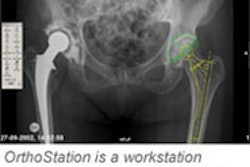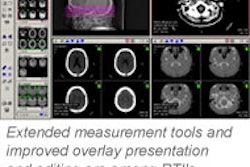“At UCLA, we’re replacing three generations of legacy PACS -- both homegrown and commercial -- with a single-vendor solution. The idea is to have an enterprise-wide, scalable digital image and data archive for all departments in the facility, not just radiology,” said Dr. Osman Ratib of the department of radiology at UCLA.
Ratib shared the development schema utilized by UCLA to
satisfy its long-term data storage needs at the 2003 RSNA meeting on Wednesday.
The institution resolved to store approximately 18 months of data on site in
“We perform more than 300,000 procedures per year distributed over five physical locations and generate about 160 gigabytes of data per week,” noted Ratib.
Ratib and his team studied different financial models of long-term data archive services compared with the traditional cost of capital expenses and operational costs of on-site digital archives.
“We also included the cost of server upgrades once every three years when compiling our forecast data for capital expenses,” observed Ratib.
The group then compared total cost of ownership, including direct and indirect expenses and savings, for each model. Financial parameters were also confronted with logistic and operational advantages and disadvantages of ASP models versus traditional image archiving systems, said Ratib
“The benefits to off-site data warehousing is that it is scalable, the technology doesn’t become obsolete, it has a limited capital cost, it reduces personnel costs, it saves space, and it has embedded disaster recovery. The disadvantages to off-site storage is the total cost of ownership, its suitability for a large volume of data, it represents a long-term commitment, and, because it is accessed via a wide-area network, it is a single point of failure,” explained Ratib.
The analysis showed that the traditional linear ASP business model for data storage on the basis of a per-study cost was not suitable for the institution, as the overall cost exceeded its cost to support and maintain an in-house archive infrastructure.
“The only advantage of ASP is that it does not require iterative data migrations from legacy media to new storage media at regular intervals. This advantage does not however justify the important difference in price of the traditional ASP model,” said Ratib.
UCLA worked with the ASP provider, GE
Medical Systems of
Some of the concessions it received from the vendor were a one-time fee per study and a 4% decrease in its year-to-year cost of storage. In return, the institution agreed to an annual 5% increase in its procedure volume for storage, explained Ratib.
“We also negotiated the physical size of a study, 40 megabytes, and agreed to a per-study fee increase per 10 megabyte over 40. For cardiology, we created a different pricing structure for studies that exceeded 100 megabytes,” he said.
Ratib observed that the new model was more adaptable to different procedure sizes and data volumes, and would account for a progressive reduction of storage cost over time, as well as provide for the scalability of off-site storage capacity.
“The difficulties inherent in creating this sort of ASP structure are that it results in complex negotiations with the vendor, and that takes time because there’s no pre-existing model on which to base a contract. In addition, there is very limited vendor liability and most of the risks will be supported by the client,” he noted.
By Jonathan S.
Batchelor
AuntMinnie.com staff writer
Copyright © 2003 AuntMinnie.com



















